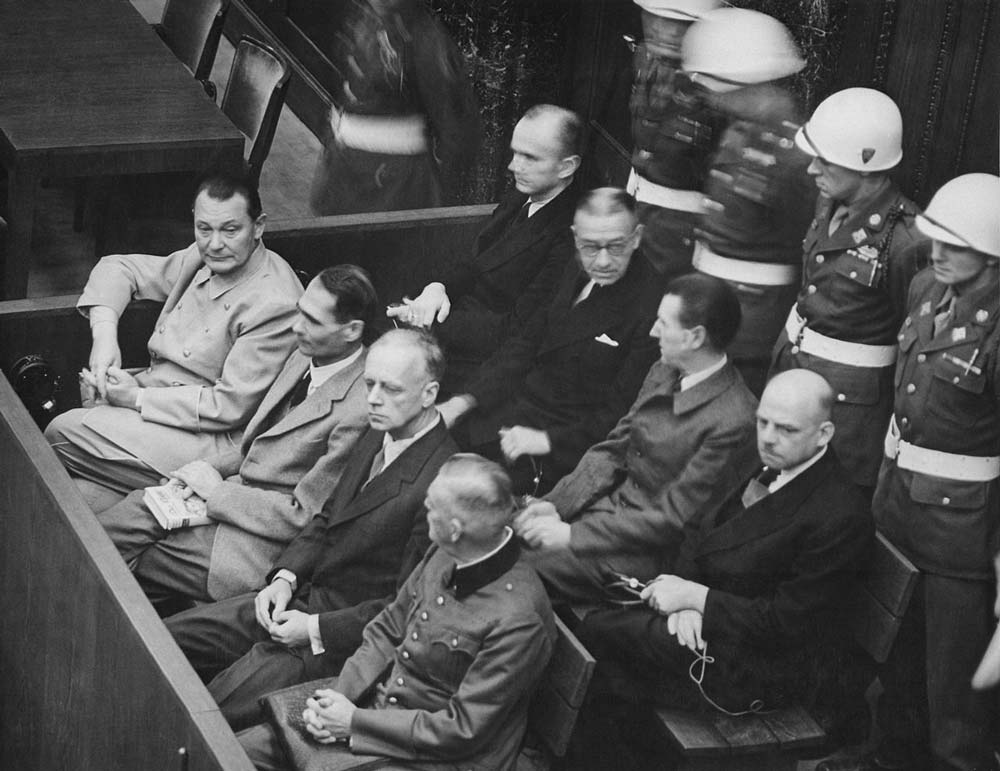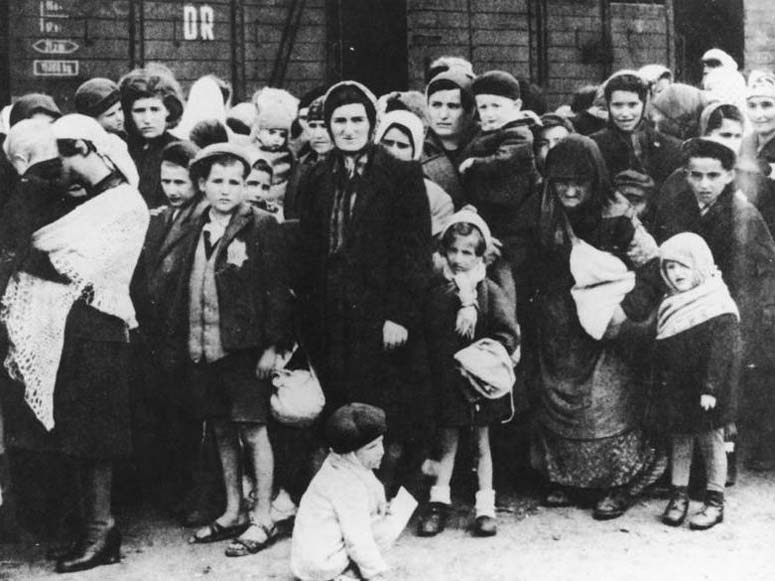 Nuremberg trials were carried out in Nuremberg, Germany with the intention of bringing Nazi war criminals to Justice. The trials took place between 1945 and 1949, where the defendants included German industrialists, high-ranking military officers, lawyers and Nazi party officials were indicted on various charges. The charges included crimes against humanity and crimes against peace. However, Adolf Hitler, the Nazi leader, committed suicide and was therefore not tried.
Nuremberg trials were carried out in Nuremberg, Germany with the intention of bringing Nazi war criminals to Justice. The trials took place between 1945 and 1949, where the defendants included German industrialists, high-ranking military officers, lawyers and Nazi party officials were indicted on various charges. The charges included crimes against humanity and crimes against peace. However, Adolf Hitler, the Nazi leader, committed suicide and was therefore not tried.
Although the legal justification and procedural innovation of the trials were controversial at that time, they are now regarded as a huge step toward the establishment of a lasting international court. They are also regarded as an important model for dealing with cases of genocide and other offenses against humanity.
Road to the Trials
Soon after Hitler got into power as Germany’s chancellor in 1933, he and his government started to implement policies that were intended to persecute German-Jews and enemies of the Nazi state. The policies continued to become more violent and repressive over the next decade. This led to the systematic state-sponsored murder of about 6,000,000 European Jews and about 4,000,000 non-Jews.
 In 1942, Allied leaders of the U.S., the Soviet Union, and the Great Britain issued a joint declaration noting the murder of numerous Jews and resolving to take legal action against those who were responsible for the violence.
In 1942, Allied leaders of the U.S., the Soviet Union, and the Great Britain issued a joint declaration noting the murder of numerous Jews and resolving to take legal action against those who were responsible for the violence.
The Prime Minister of the Great Britain, Winston Churchill proposed an execution without trial of high ranking Nazis. However, American leaders were against this and informed him that criminal trials would be more successful. Initially, the leader of the Soviet Union had proposed the execution of fifty thousand to a hundred thousand German staff officers. The setting up of Nuremberg trials encountered many legal and procedural problems. Some earlier cases of prosecution for war crimes were conducted in accordance to the laws of one nation (like Turkey in one of those cases) rather than a group of 4 powers with different legal practices and traditions.
Eventually, the 4 powers established procedures and laws for the Nuremberg trials with the Landon Charter of the ITM (International Military Tribunal) issued on August 8, 1945. The charter defined 3 categories of crimes: war crimes, crimes against humanity, and crimes against peace.
Crimes against peace included: planning, preparing, and funding wars of aggression. War crimes on the other hand included: improper treatment to prisoners of war and civilians. Crimes against humanity include: enslavement, murder, or persecution on religious, racial, or political grounds, and deportation of civilians. The German city of Nuremberg, in the state of Bavaria was chosen to be the location for trials since its Palace of Justice had large prison area and was comparatively undamaged by the war. Nuremberg was also the annual Nazi propaganda rallies site, and having the trials here marked the end of Hitler’s reign.
Major War Criminals’ Trial
These trials were held from November 20, 1945 to October 1, 1946. The layout of the trials was a combination of legal traditions. According to the American and Britain law, there were defense attorneys and prosecutors but the sentences and decisions were imposed by a panel of judges rather than one judge and a jury. Robert H. Jackson was the chief American Prosecutor. Each of the 4 Allied powers had 2 judges at the trials: a main judge and an alternate.
During these initial trials, 24 people were prosecuted along with 6 Nazi organizations. One of the indicted individuals was reckoned medically unfit to stand a trial, while another one committed suicide before the trials began. The defendants were also allowed to select their own attorneys. Since the judges and the accused spoke 4 different languages instantaneous translation technology was introduced.
This technology was provided by IBM and they had hired the technicians from international telephone exchange. The technicians provided instant translation through headphones in German, Russian, French and Russian.
At the end of the trials, all but 3 of the defendant were found guilty. 12 of them were sentenced to death and one in absentia. The rest were given prison sentences that ranged between ten years to life imprisonment. 10 of the condemned were executed by hanging, while one (Hitler’s designated successor) committed suicide before his execution.
Subsequent Trials
After the trial of major criminals, 12 more trials were held at Nuremberg. The trials were held between December 1946 and April 1949. These trials were different from the previous ones since they were held before United States military tribunal instead of the international tribunal. The change resulted from growing differences among the 4 allied powers that made joint trials impossible. However, the trials were still held in Palace of Justice in Nuremberg.
The first group that included 23 defendants were tried from December 9, 1946 to August 20, 1947 in a proceeding called Doctors Trial. The doctors were accused of crimes against humanity that included conducting medical researches on prisoners of war.
The second trial was the Judges Trial that saw 16 lawyers and judges charged with promoting the Nazi government’s plan for racial purity. Other subsequent proceedings dealt with German industrialists, high ranking army officials and SS officers. Out of the 185 individuals indicted in the Subsequent Trials, twelve were sentenced to death, eight were given life imprisonment while seventy-seven received prison terms of various durations.
Aftermath
There were many controversies surrounding the Nuremberg trials, even from the people who wanted the major criminals to be punished. Nonetheless, many observers termed the trials as a big step toward the establishment of international law. The findings from the trials led to Universal Declaration of Human Rights and U.N. Genocide Convention in 1948.
The findings also led to the Geneva Convention in 1949 on the Laws and Customs of War. Moreover, the IMT provided a useful precedent for the trials of Japanese-war criminals from 1946 to 1948 in Tokyo; establishment of tribunals for crimes committed in Rwanda and former Yugoslavia, in 1994 and 1993 respectively; and the trial of Adolf Eichmann (Nazi leader) in 1961.
Despite all these major accomplishments, there was a lot of criticism from all over the world. Chief justice of the United States Supreme Court, Harlan Stone, termed the proceedings as a high-grade lynching party and sanctimonious fraud. An associate United States Supreme Court Justice, William O. Douglas said that the four Allied powers had substituted power for principle at Nuremberg.